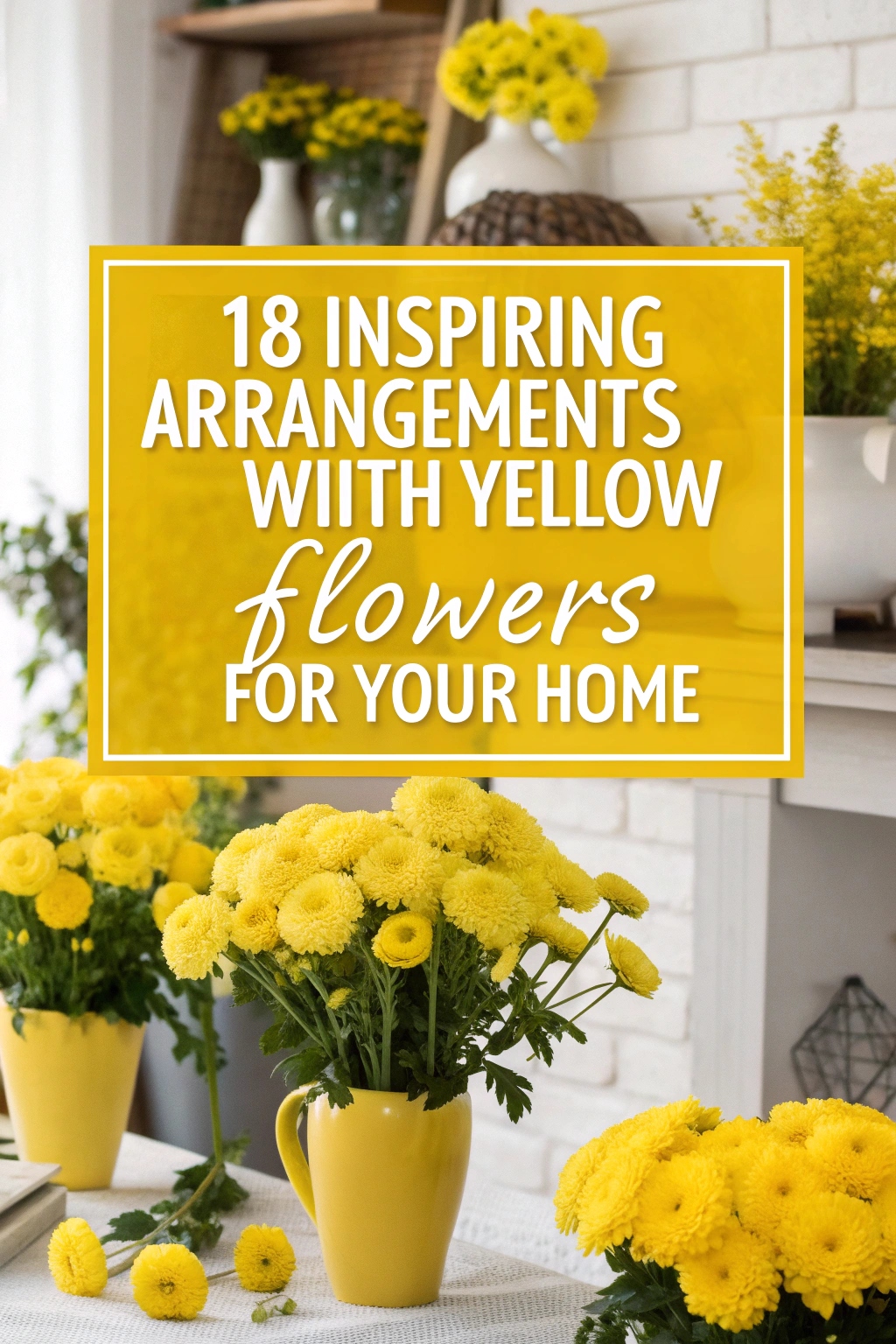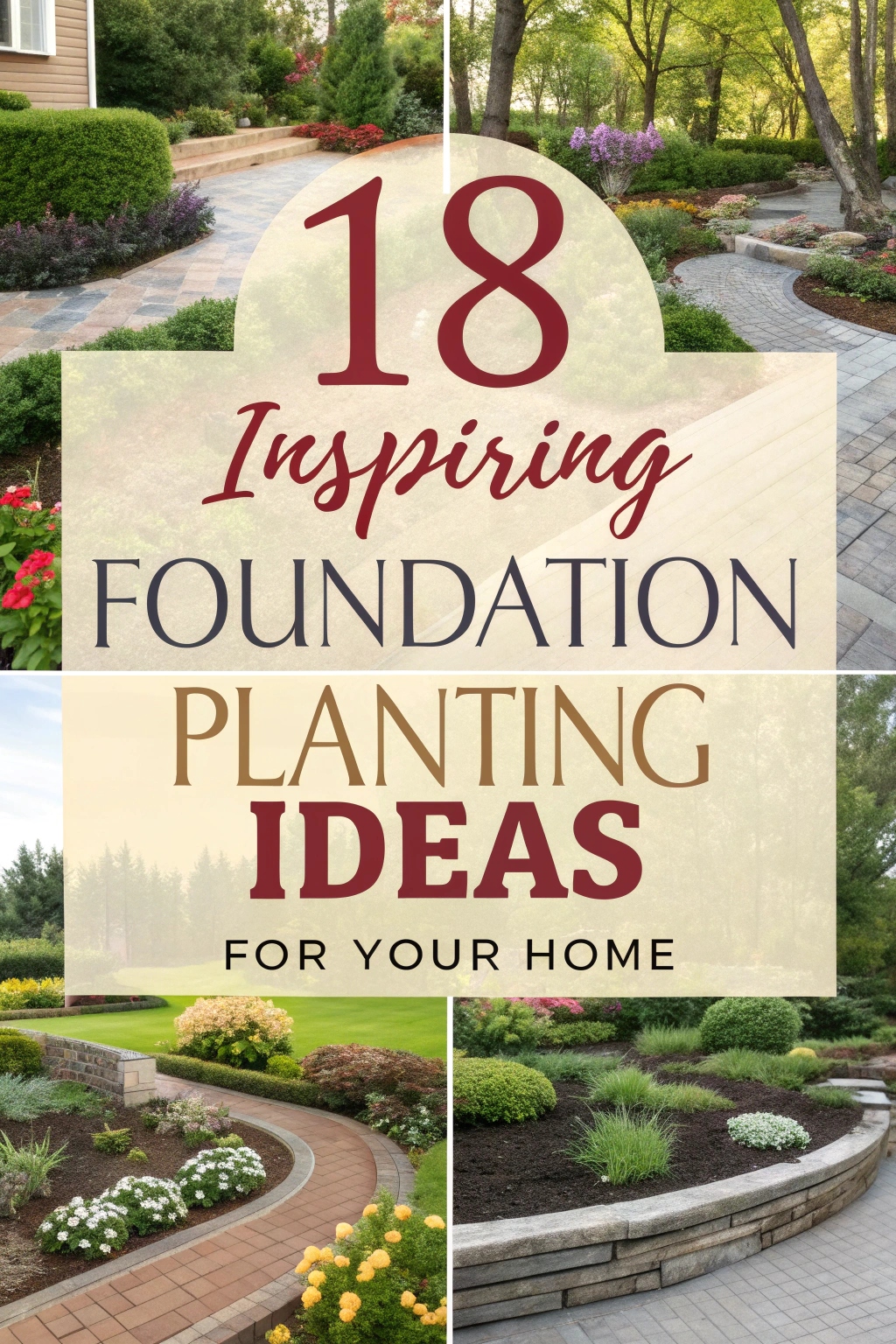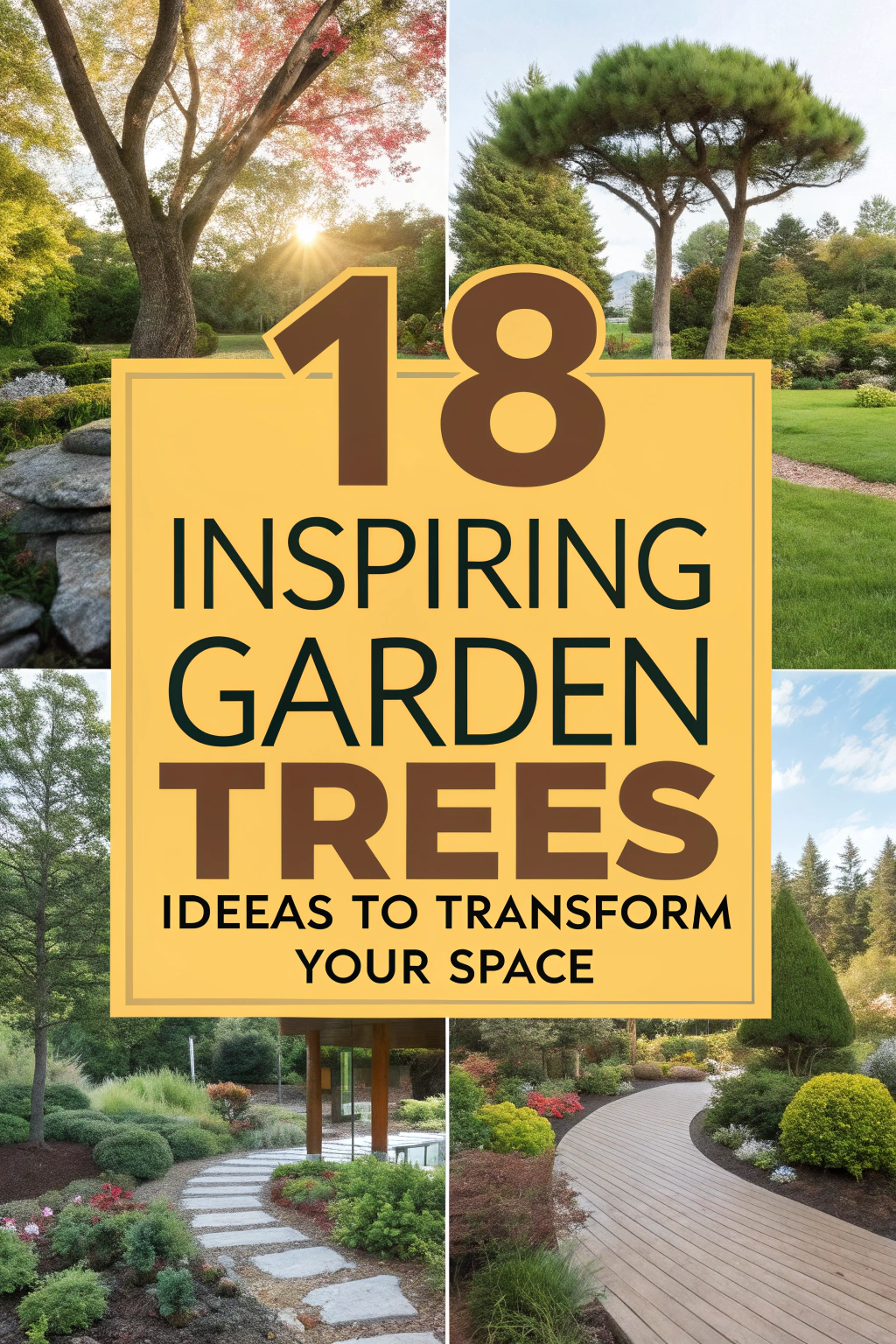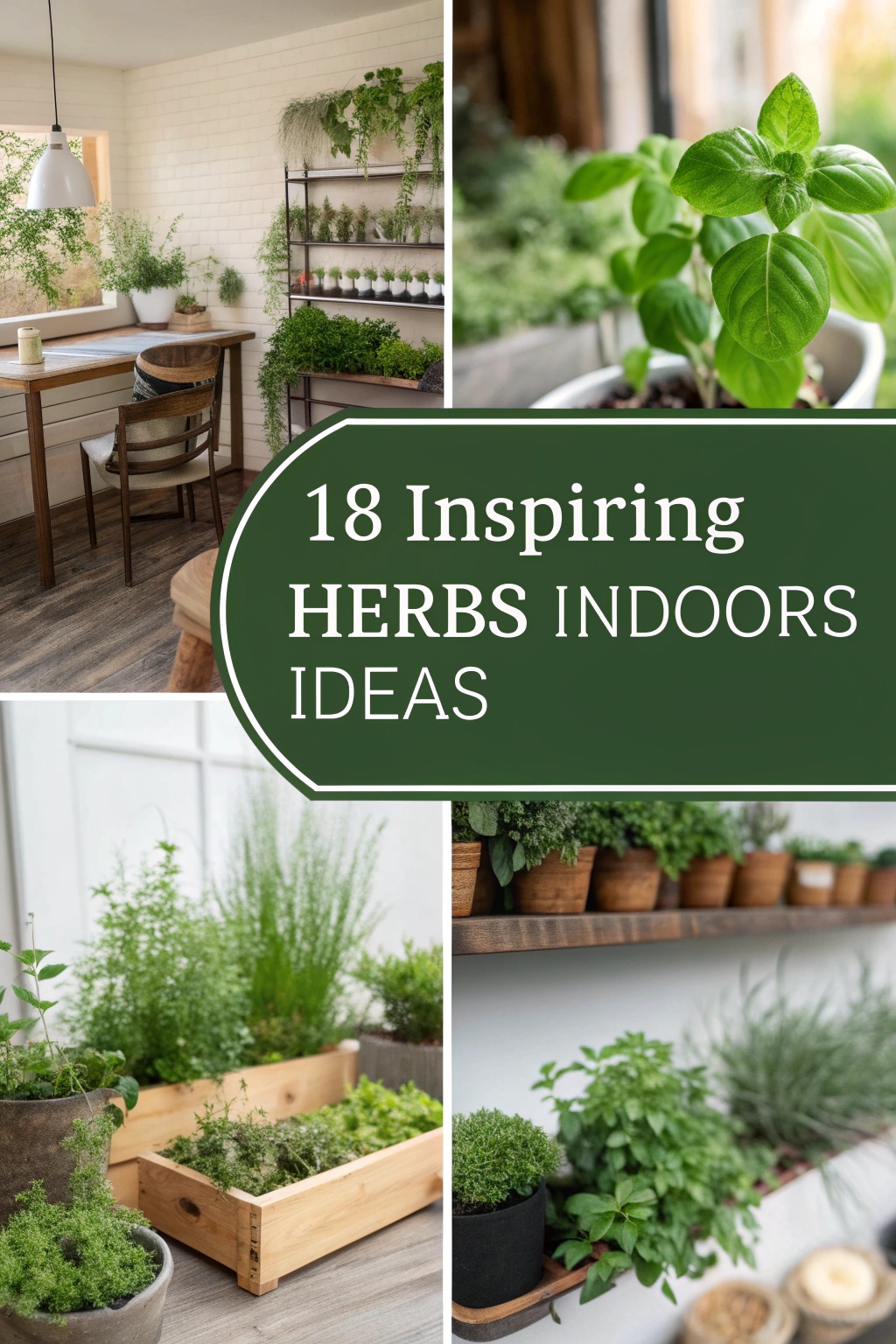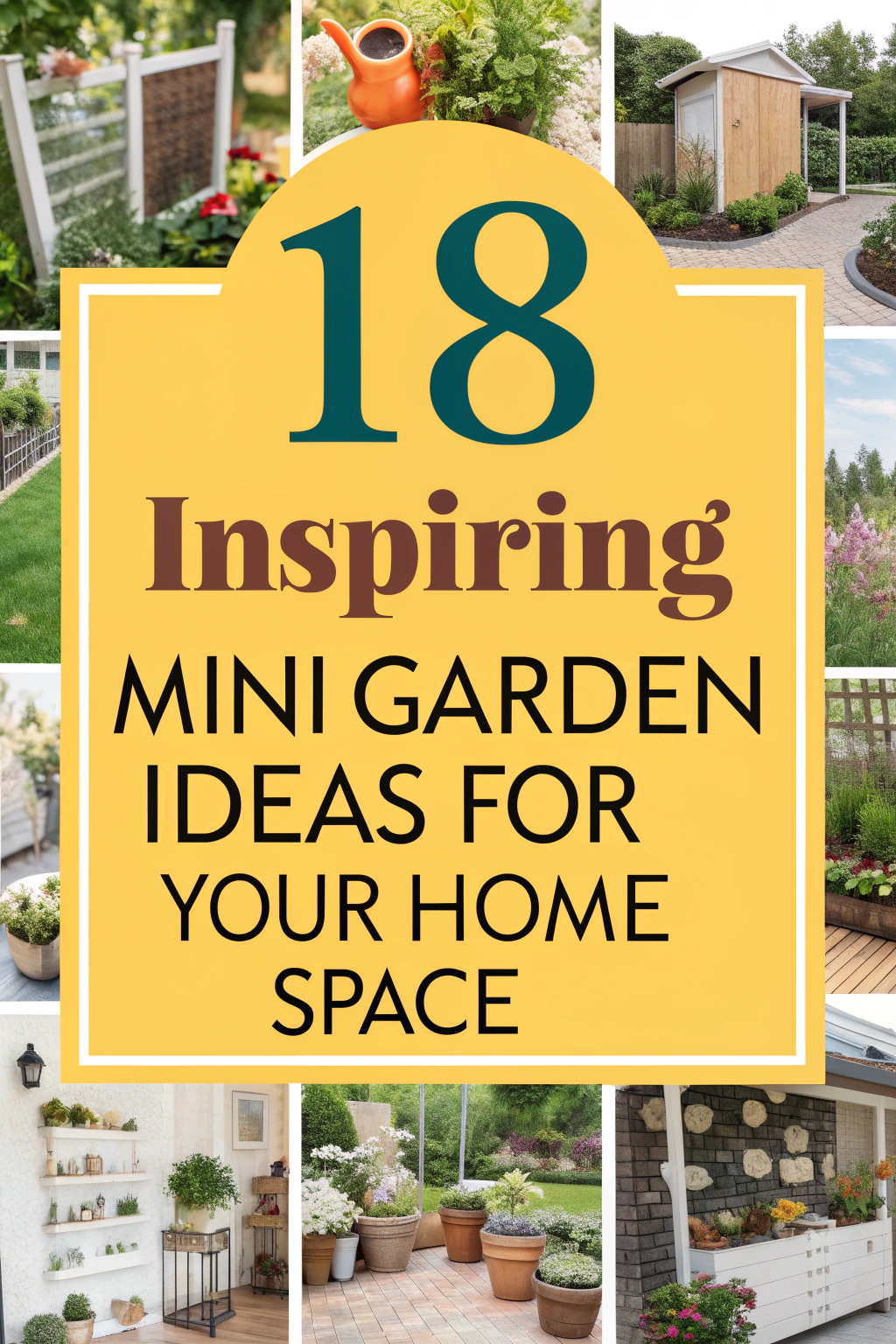16 Wildflower Garden Ideas to Brighten Your Space
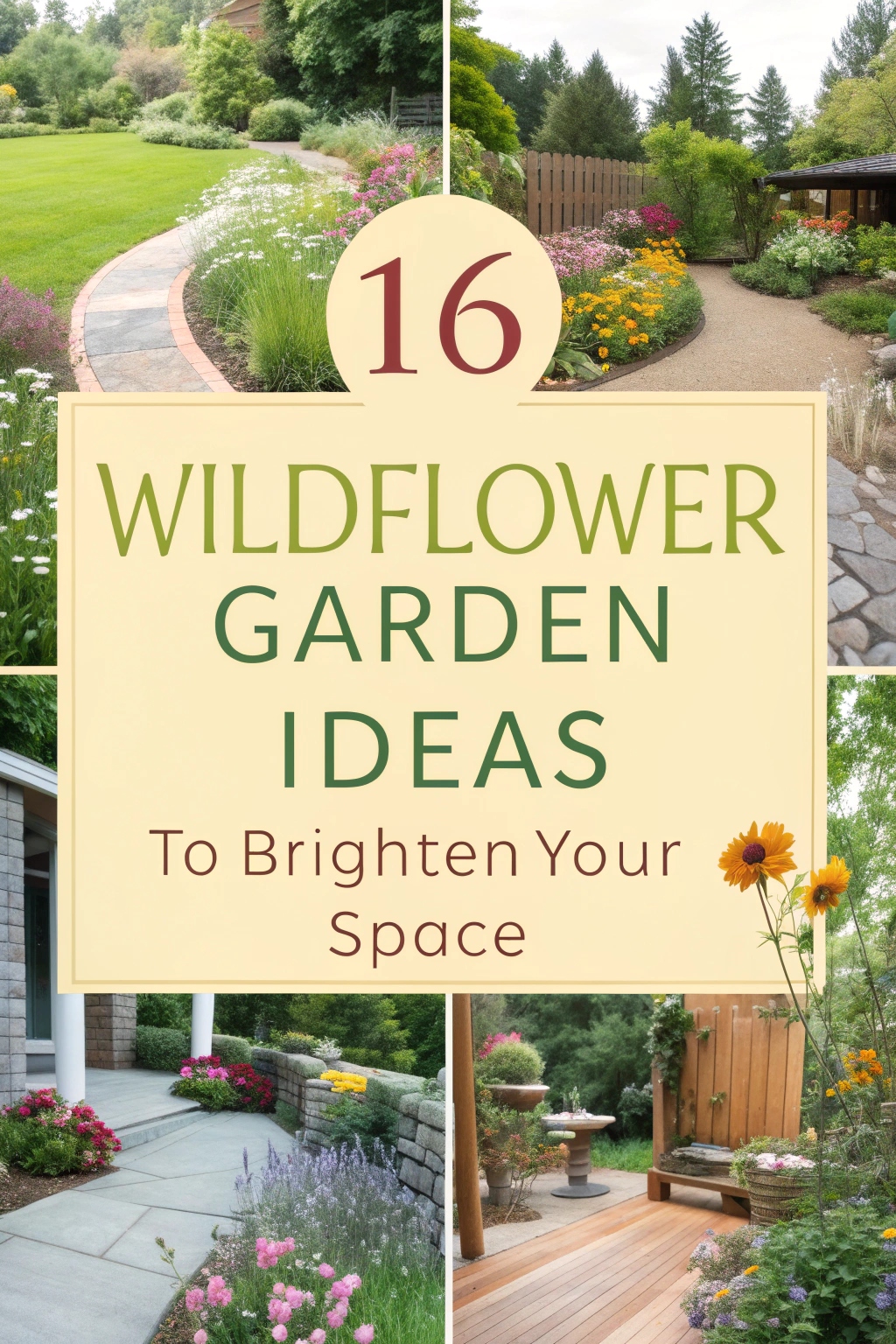
If you’re looking to enhance your outdoor space, wildflower gardens offer a vibrant and sustainable option. They not only boost your home’s aesthetic but also support local wildlife. By selecting the right native plants and designing your garden thoughtfully, you can create a stunning landscape. Plus, you can tailor your garden for specific purposes, like attracting butterflies or incorporating edible flowers. Discover how to craft a wildflower oasis that truly stands out.
Choosing the Right Location for Your Wildflower Garden
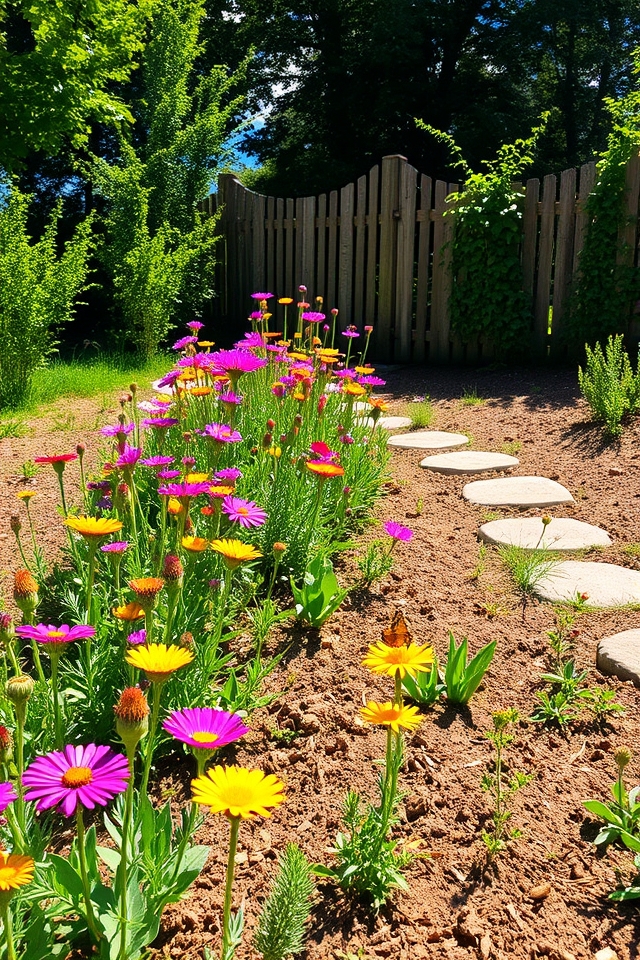
When selecting the ideal location for your wildflower garden, consider factors such as sunlight, soil quality, and drainage. Most wildflowers thrive in full sun, requiring at least six hours of direct sunlight daily. Look for well-draining soil; if your soil is heavy clay, you may need to amend it to promote better drainage. Additionally, guarantee the site is sheltered from strong winds and frequently visited, allowing you to enjoy the beauty of your garden throughout the seasons.
Selecting Native Wildflowers for Your Area
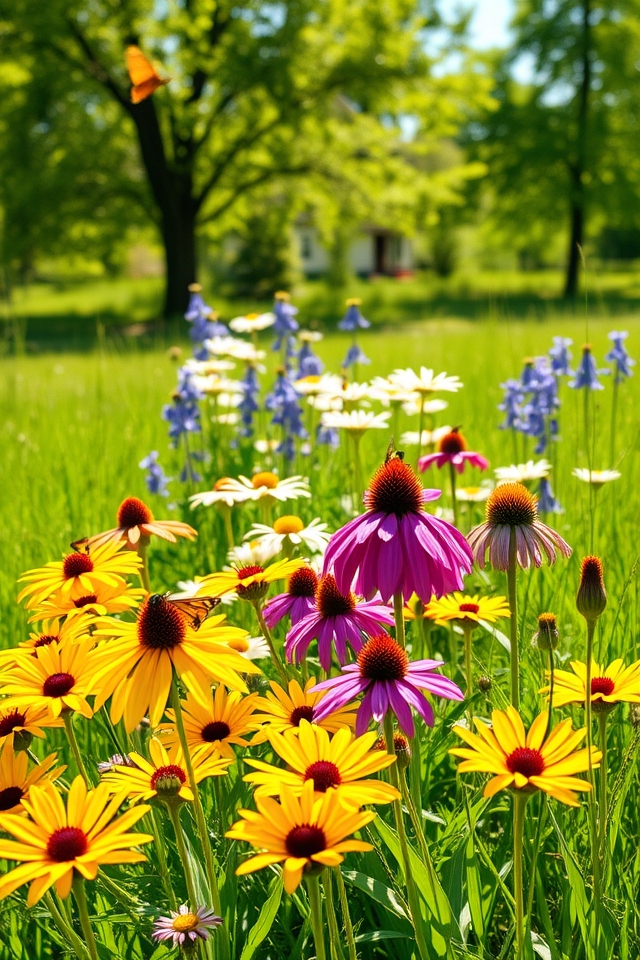
Selecting native wildflowers for your area is essential for creating a thriving wildflower garden. Native plants are well-adapted to local soil, climate, and wildlife, making them more resilient than non-native species. To choose the right flowers, consult local gardening resources or extension offices to identify species that suit your region’s conditions. Consider the blooming seasons and colors to create a vibrant and diverse display that supports local pollinators and enhances biodiversity in your garden.
Creating a Butterfly Haven With Wildflowers
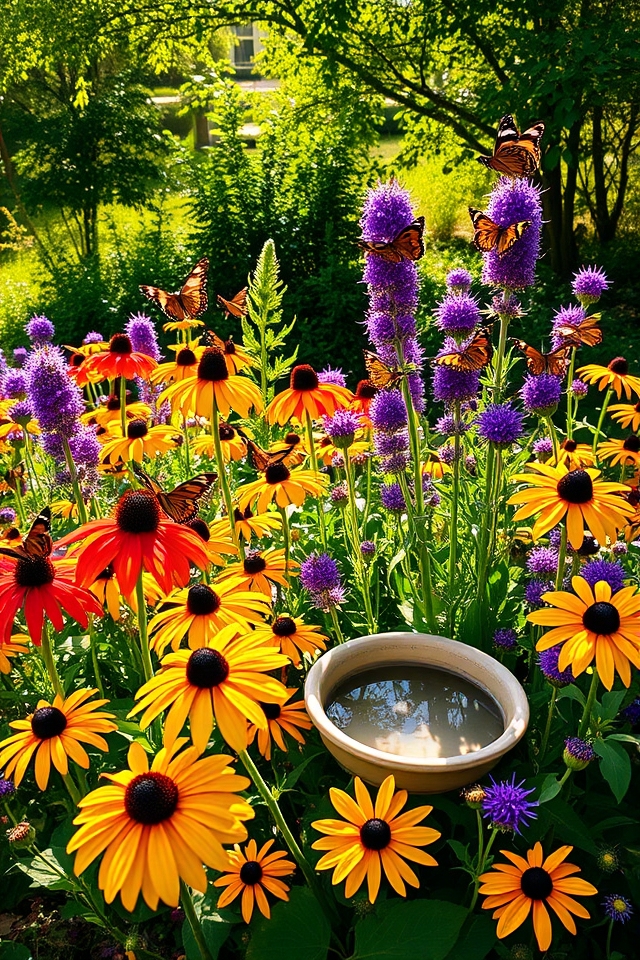
Creating a butterfly haven with wildflowers involves selecting a variety of nectar-rich blooms that attract these vibrant insects. Opt for native species such as coneflowers, black-eyed Susans, and milkweed, which provide essential food sources for caterpillars and adult butterflies. Arrange your wildflowers in clusters, allowing for sunny spots and sheltered nooks. Add a small water source, such as a shallow dish, to encourage butterflies to visit and create a thriving ecosystem in your garden.
Incorporating Edible Wildflowers Into Your Garden
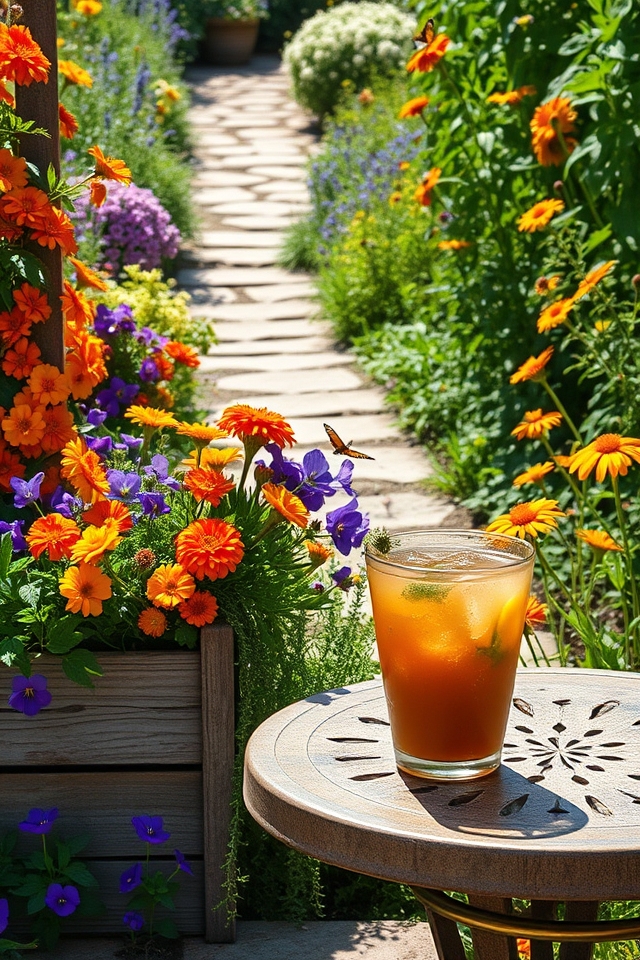
Incorporating edible wildflowers into your garden not only enhances its beauty but also adds unique flavors to your culinary creations. Flowers like nasturtiums, violets, and calendula are not only visually stunning but also safe to eat. These blossoms can be used in salads, as garnishes, or even in teas. Planting edible wildflowers can attract beneficial pollinators while providing a tasty, nutritious harvest right from your own backyard. Embrace the beauty and bounty of nature!
Designing a Wildflower Meadow
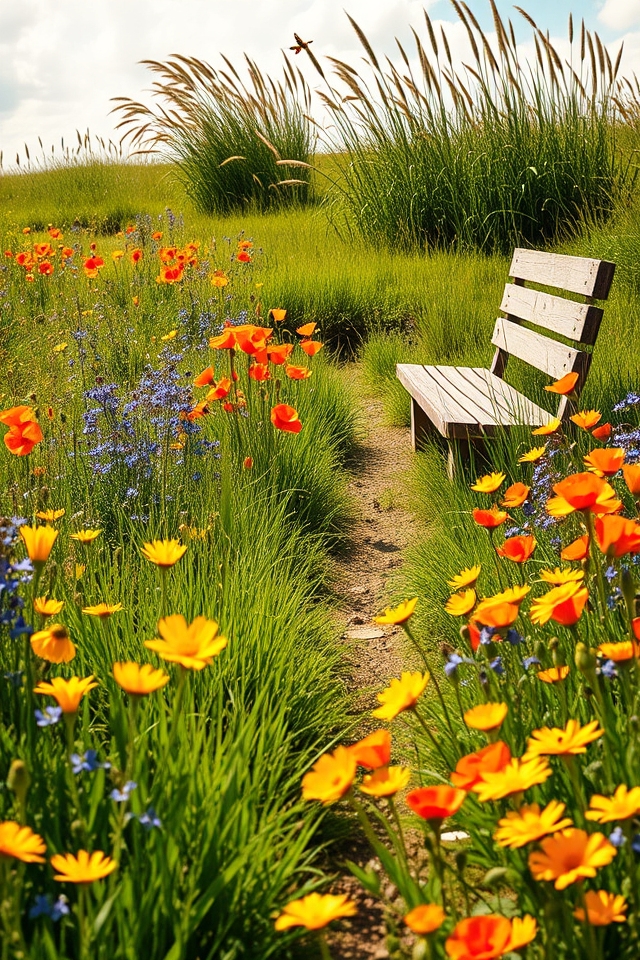
Designing a wildflower meadow involves selecting a diverse mix of native wildflower seeds that thrive in your region. Start by choosing a sunny location with well-draining soil. Prepare the ground by removing weeds and debris, then scatter the seeds in the fall or early spring. Water gently and allow nature to take its course. Incorporate paths or seating areas to appreciate the beauty, and enjoy the vibrant colors and pollinator activity throughout the growing season.
Using Raised Beds for Wildflower Displays
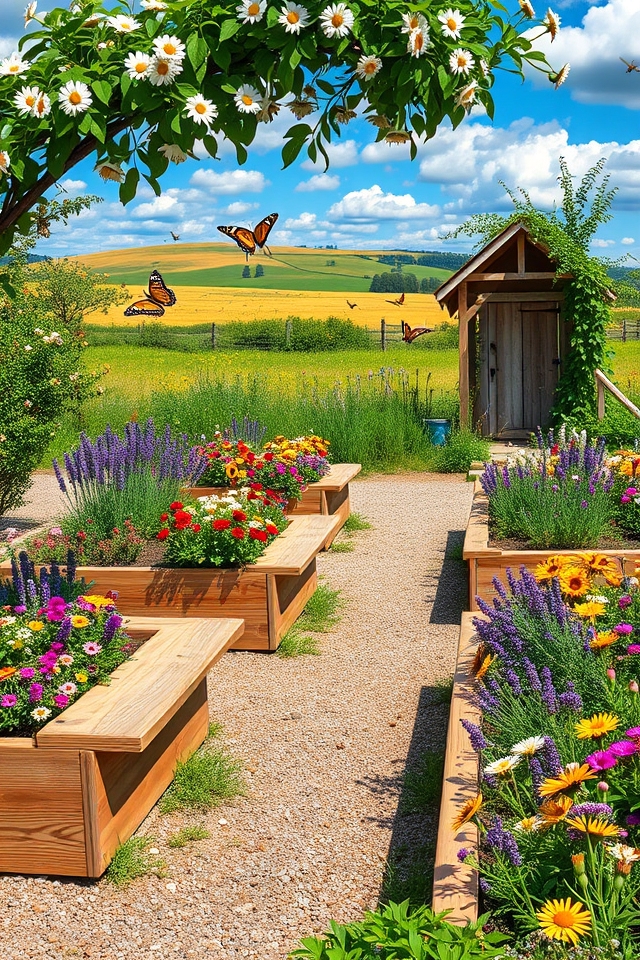
Using raised beds for wildflower displays offers a unique and effective way to showcase native blooms while enhancing garden aesthetics. These elevated structures not only improve drainage and soil quality but also make it easier to manage pests and weeds. With defined borders, raised beds allow for creative design, enabling gardeners to mix various wildflower species for vibrant color combinations. Additionally, they can create microclimates that support diverse plant growth, attracting essential pollinators to the garden.
Wildflower Potpourri: Container Gardening Ideas
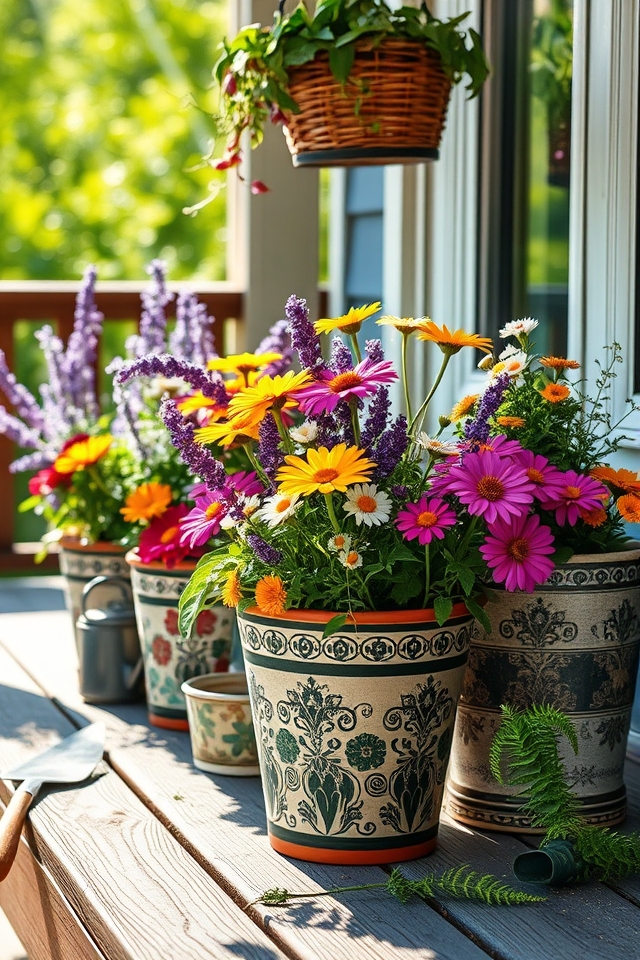
Wildflower potpourri is a delightful way to bring the beauty of nature into your home through container gardening. Combine a mix of colorful wildflowers, such as lavender, chamomile, and zinnias, in decorative pots or hanging baskets. Guarantee each container has good drainage and is filled with nutrient-rich soil. Position them in sunny spots to encourage vibrant blooms. Not only do these arrangements add visual appeal, but they also fill the air with enchanting scents.
Attracting Bees With a Wildflower Garden
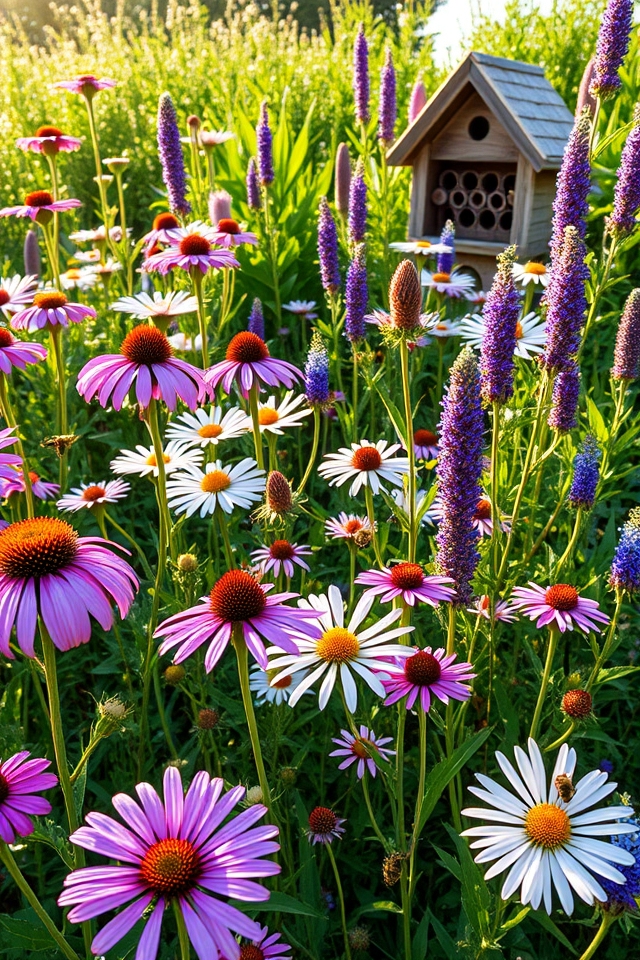
Attracting bees to your wildflower garden is crucial for promoting biodiversity and supporting pollination. To create a bee-friendly environment, choose native wildflowers such as coneflowers, asters, and lavender, which provide nectar and pollen. Plant in clusters for easier access and guarantee blooms are available throughout the growing season. Avoid pesticides and provide nesting habitats, such as bare soil patches or bee hotels, to encourage these essential pollinators to thrive in your garden.
Color-Themed Wildflower Garden Layouts
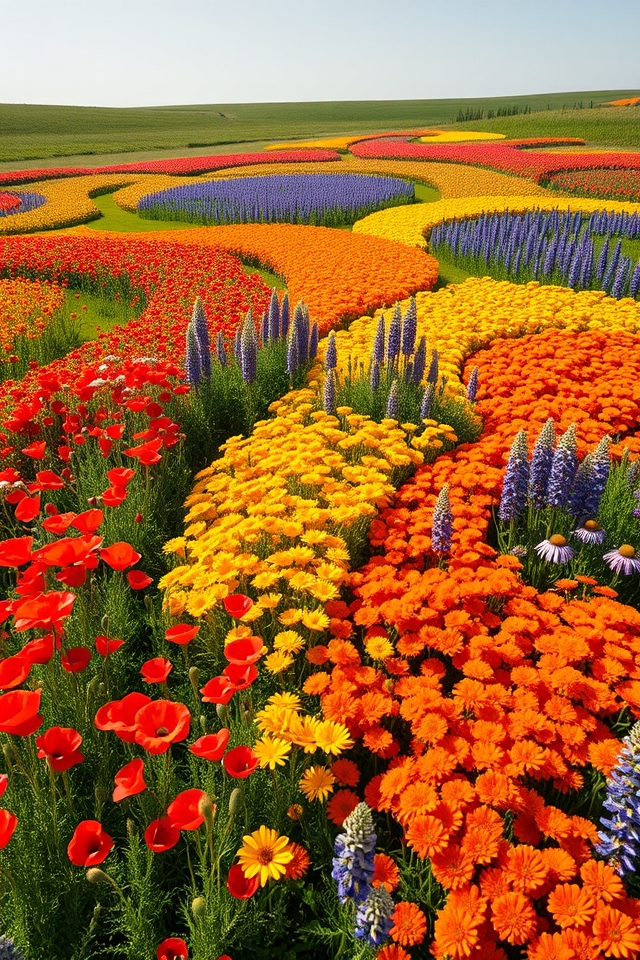
Color-themed wildflower garden layouts allow you to create striking visual displays by grouping flowers based on complementary hues. Consider creating a vibrant rainbow palette with red poppies, orange marigolds, yellow coreopsis, blue lupines, and purple coneflowers. Alternatively, a monochromatic scheme, such as all shades of blue, can evoke a serene atmosphere with flowers like ageratum and forget-me-nots. These layouts not only enhance aesthetic appeal but also encourage diverse pollinators, enriching your garden’s ecosystem.
Designing for All Seasons With Wildflowers
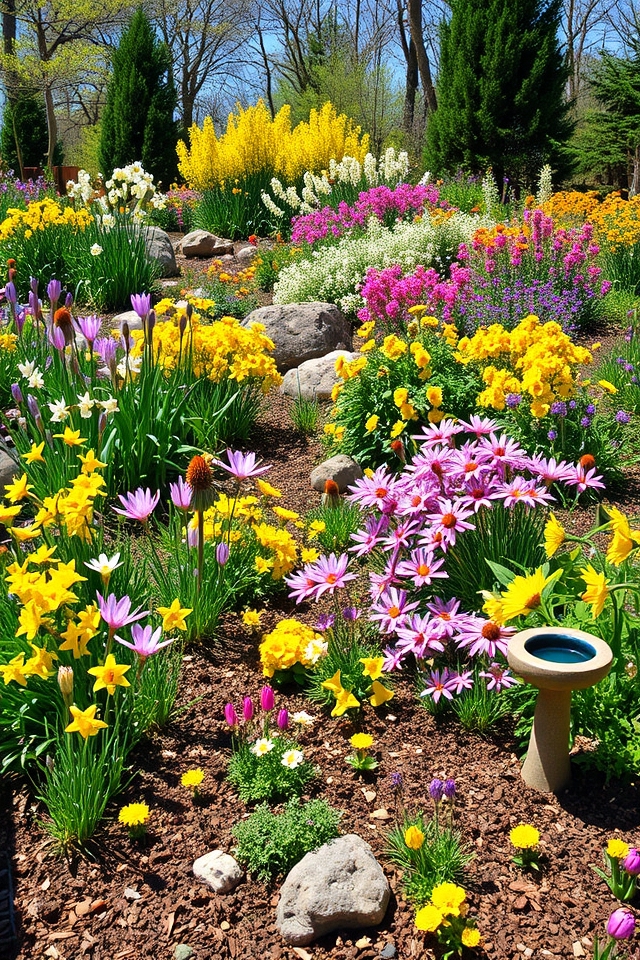
Designing a wildflower garden for all seasons involves selecting a diverse array of blooms that thrive throughout the year. Incorporate early spring perennials like crocuses and daffodils, vibrant summer varieties like coneflowers and daisies, and stunning fall flowers such as asters and goldenrods. Additionally, integrating evergreen foliage can provide structure during winter months. This seasonal approach not only guarantees a continuous display of color but also supports local wildlife year-round.
Wildflower Pathways: Creating a Floral Walkway
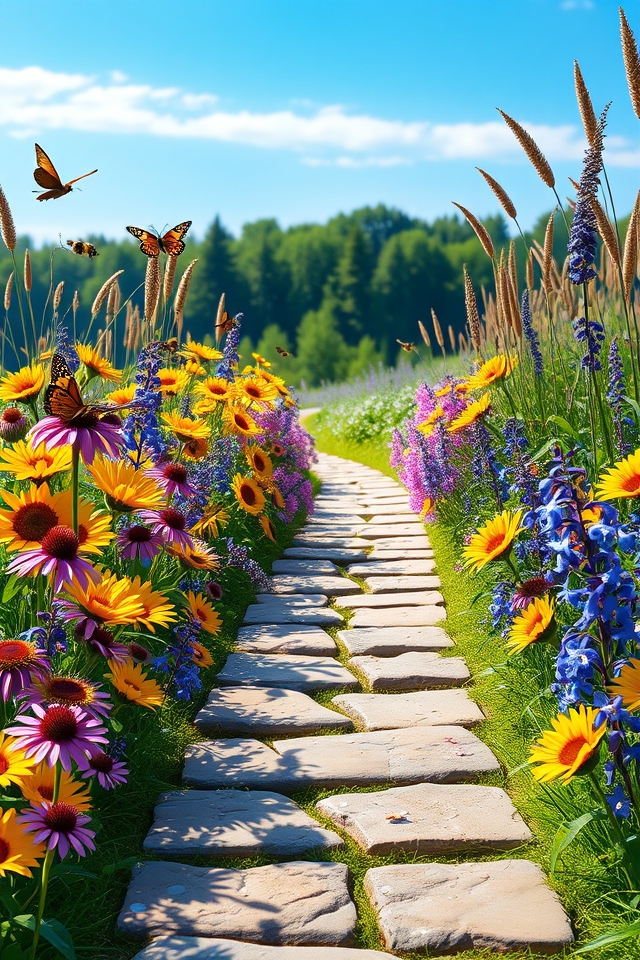
Creating a floral walkway with wildflowers not only enhances the beauty of your garden but also provides a delightful sensory experience. Start by selecting a variety of native wildflowers that bloom at staggered times for continuous color throughout the seasons. Layout a winding path bordered by vibrant blooms, allowing petals to softly spill over the edges. Incorporate stepping stones or wood chips to define the pathway, inviting visitors to stroll and enjoy the natural beauty. Additionally, consider planting pollinator-friendly species to attract butterflies and bees, creating a lively and thriving ecosystem.
Combining Wildflowers With Perennials
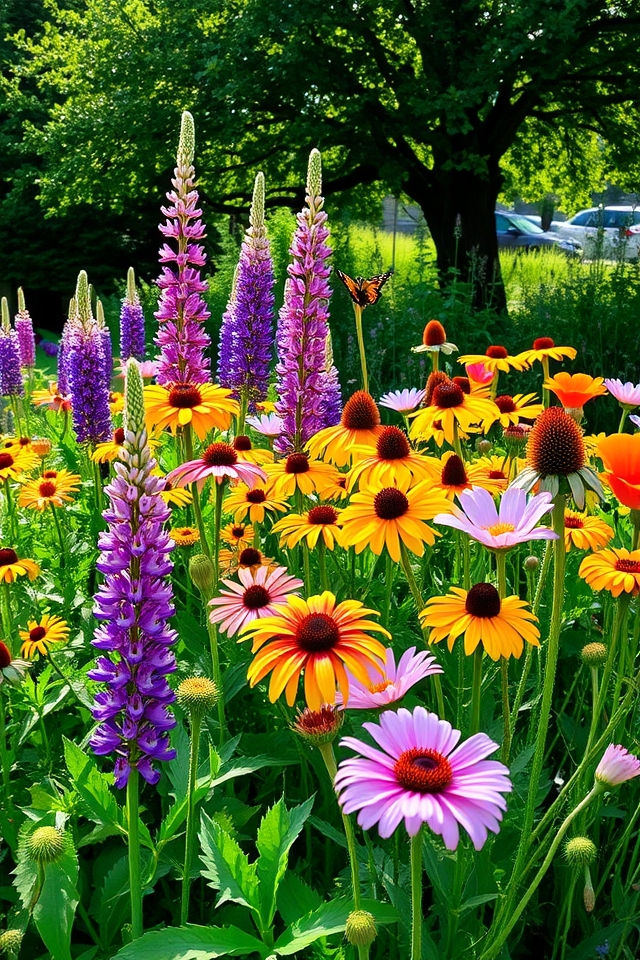
Combining wildflowers with perennials creates a vibrant and dynamic garden that blooms throughout the seasons. By pairing sturdy perennials like coneflowers and black-eyed Susans with delicate wildflowers such as lupines and poppies, you can achieve a balanced aesthetic while enhancing biodiversity. This combination not only offers visual interest but also supports local pollinators. In addition, the wildflowers’ natural habit can fill gaps and provide a more relaxed, meadow-like feel to your garden design.
Wildflower Gardens for Small Spaces

Wildflower gardens are perfect for small spaces, offering vibrant colors and enticing aromas without requiring extensive room. Use compact flower varieties such as poppies, cornflowers, and daisies to create a lush, layered look in window boxes, containers, or narrow patches in landscaping. Incorporate vertical elements like trellises or hanging planters to maximize vertical space. These gardens not only bring beauty but also attract pollinators, enhancing the overall biodiversity of your compact outdoor area.
Making a Wildlife-Friendly Wildflower Patch
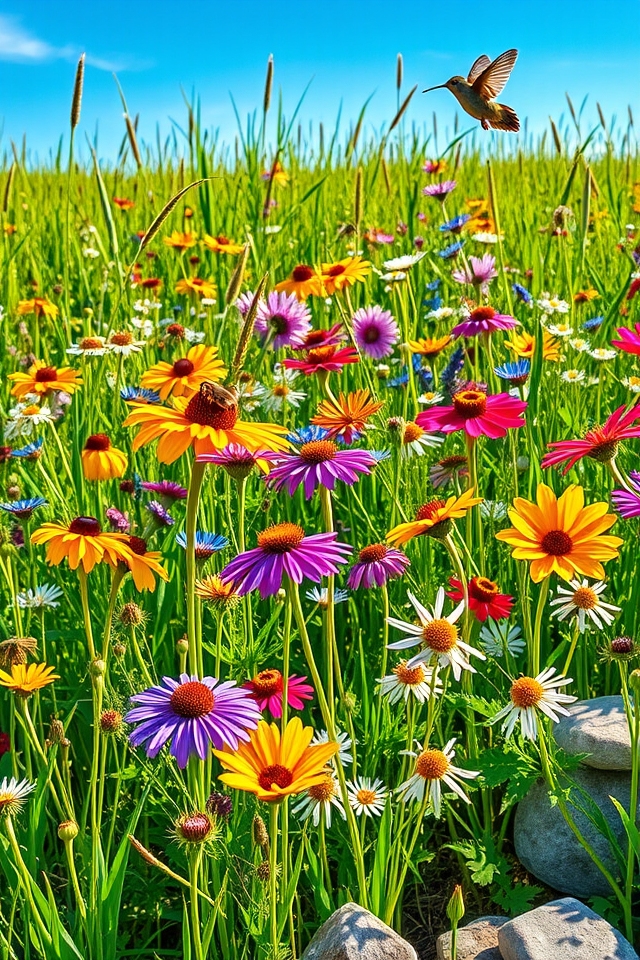
Creating a wildlife-friendly wildflower patch involves selecting native plants that attract pollinators like bees, butterflies, and hummingbirds. Choose a diverse mix of wildflowers that bloom at different times to provide a continuous food source throughout the growing season. Incorporate grasses and herbs to create habitat and shelter for small creatures. Avoid pesticides to maintain a safe environment, and consider adding rocks or logs for additional nesting sites, enhancing your garden’s ecological value.
Themed Wildflower Gardens: A Unique Approach
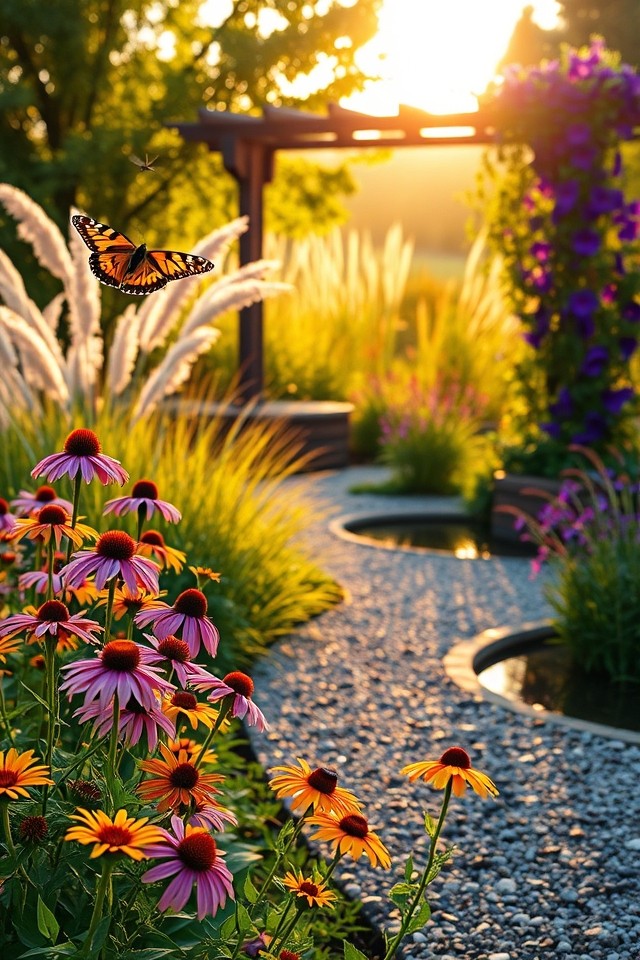
Themed wildflower gardens offer a creative way to harmonize nature with personal expression. By selecting specific color palettes, historical references, or regionally inspired designs, gardeners can create a narrative that reflects their interests. For example, a butterfly theme could include flowers that attract pollinators, while a prairie theme might showcase native grasses and wildflowers. These gardens not only enhance biodiversity but also provide a stunning backdrop that engages visitors and encourages exploration.
Maintenance Tips for a Thriving Wildflower Garden
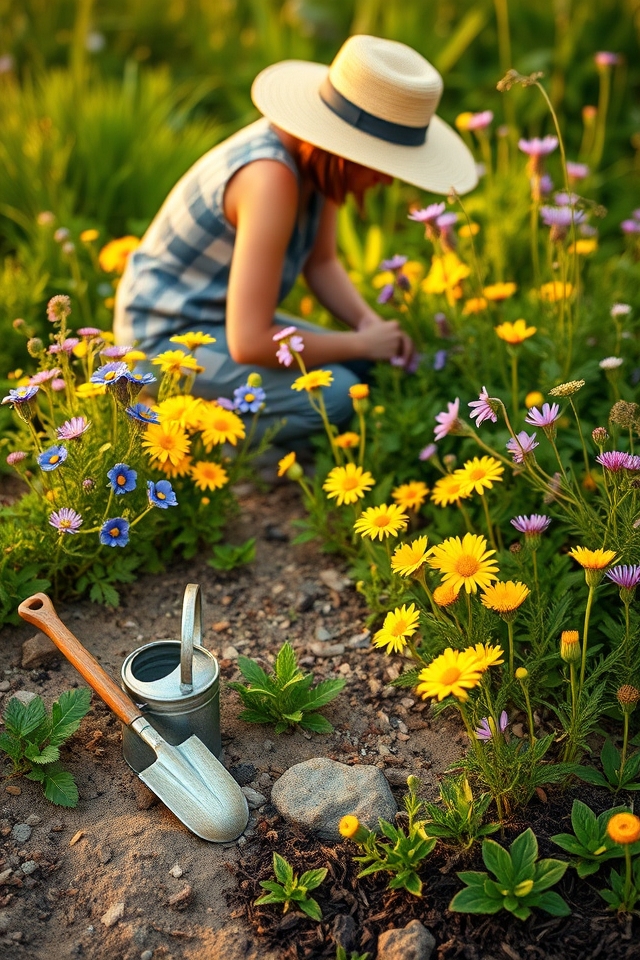
To guarantee a thriving wildflower garden, regular maintenance is key. Start by monitoring the growth of your wildflowers and weeding out any invasive species that may compete for nutrients. Adequate watering is essential, especially during dry spells. Incorporate seasonal mulching to retain moisture and suppress weeds. Additionally, deadhead spent blooms to encourage new growth and prolong blooming periods. Finally, consider using natural fertilizers to enrich the soil and support healthy plant development.
